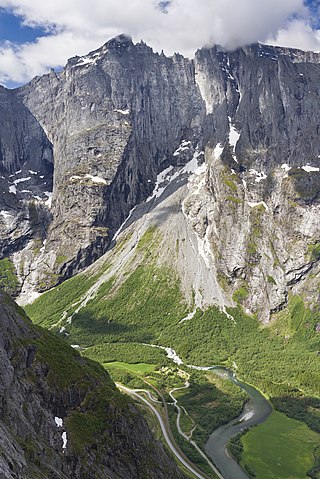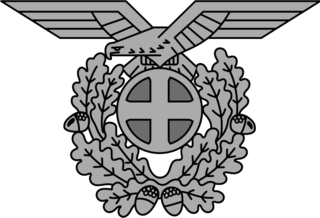
Carl Fredriksens Transport was the code name for an operation during the occupation of Norway by Nazi Germany to help Jews and other persecuted Norwegians escape persecution, deportation, and murder in death camps. [1]

Carl Fredriksens Transport was the code name for an operation during the occupation of Norway by Nazi Germany to help Jews and other persecuted Norwegians escape persecution, deportation, and murder in death camps. [1]
The Nazi regime in Norway implemented its part of the Holocaust through a series of steps, starting with registration, then confiscation, internment and concentration, and ultimately deportation of Jews, primarily to Auschwitz. Some Jews had fled Norway to Sweden earlier in the war, but most had stayed in their homes until October 26, 1942. At that point, most men were arrested and detained in prison camps, while women and children were ordered to report to the nearest police station on a daily basis.
Although the Norwegian resistance movement had maintained a network of escape routes to Sweden, they were unprepared to deal with the urgent plight of Jews who faced deportation. In addition, simultaneously with the arrest and deportation of Jews in 1942, the Gestapo launched an offensive to identify and apprehend members of the Norwegian resistance. This put pressure both on the viability and capacity of existing escape routes.
Carl Fredriksens Transport (named after Norway's King Haakon VII whose real name was Christian Frederik Carl Georg Valdemar Axel) came into being when four Jewish Norwegians appeared on the doorstep of nursery owner Rolf A. Syversen, asking for help. Through one of the leaders of Milorg, Ole Berg, Syversen contacted Alf Tollef Pettersen, who had been fired from the Norwegian police force for refusing to pledge loyalty to the Quisling regime. Pettersen had been hired to manage transportation and was intimately familiar with the roads from Oslo to the border to Sweden through Østfold. [2] [3]
What started with a few nighttime drives turned into a large-scale operation. The group accepted all refugees, but charged those who could afford it 180 kroner. In time, the Norwegian resistance group Sivorg put its clandestine network and financial resources behind it. Pettersen, his wife Gerd, Syversen, and the resistance leader Reidar Larsen managed the operation. Altogether about 1,000 refugees were moved to safety, of whom approximately 500 were Jewish. The name Carl Fredriksens Transport was based on the original name of the exiled Norwegian king Haakon VII, who was Carl, son of Fredrik, but also sounded like a common Norwegian name. [4] [5]
After having found their way to Syversen's nursery near Carl Berners plass in Oslo, [6] refugees were loaded on the backs of trucks, and covered by a tarp. Children were often sedated. Gerd Pettersen forged bills of lading and other necessary documents. Sivorg's network along the route would monitor German or border police patrols.

The route varied somewhat, but would typically end up near Orderudseter, just a few hundred yards short of the Swedish border. The refugees would walk this last distance. [7]
The operation started in late November 1942. About ten truckloads a week went to the border and back in the dark of night, mostly with headlights off. By mid-January, the network had been infiltrated by Norwegian collaborators and had to be shut down. The Pettersens made a successful dash for the border in a sedan, breaking the axle just as they crossed into Sweden. Rolf Syversen stayed in Oslo, but was arrested for an unrelated matter in June. He was executed at Trandumskogen in November 1944. [1]
Although this was the largest rescue operation in Norway during World War II, it was virtually unknown for decades. In order to maintain operational security, the refugees were not aware that they were part of a larger scheme, and their rescuers' identities were kept secret in any event. Ragnar Ulstein, a historian who specialized in the stream of refugees from Norway to Sweden, uncovered the most important features during an interview with Alf Tollef Pettersen. Oslo Jewish Museum has continued the research started by Ulstein and interviewed Gerd Pettersen before she died. [3]
In September 2010, a commemorative plaque and cast-iron truck were unveiled at the turn-off to the private road that went to the Swedish border. Filmmaker Robert Murphree is working to create a movie about the operation, historian Mats Tangestuen at Oslo Jewish Museum is writing a book, and artist Victor Lind is creating a public space at the site of Syversen's nursery he is calling "This is a Good Place" (Dette er et fint sted). [3] [8]
A bicycle ride, named after the operation, takes place in mid-August from Fetsund, along the original route and to the border crossing to Sweden. The Pettersen's granddaughter Ane Munkeby arranges the ride.
In 2018 Marte Michelet mentioned a "Reidar Larsen" in her book; in 2021 she apologised for having made analyses of a name-fellow of Reidar Larsen. [9]

The history of Jews in Norway dates back to the 1400s. Although there were very likely Jewish merchants, sailors and others who entered Norway during the Middle Ages, no efforts were made to establish a Jewish community. Through the early modern period, Norway, still devastated by the Black Death, was ruled by Denmark from 1536 to 1814 and then by Sweden until 1905. In 1687, Christian V rescinded all Jewish privileges, specifically banning Jews from Norway, except with a special dispensation. Jews found in the kingdom were jailed and expelled, and this ban persisted until 1851.

Trandumskogen is a forest located in Ullensaker, Akershus county, Norway. It was the site of one of the first discoveries in May 1945 of German mass graves in Norway. The German executioner Oskar Hans was the officer in command of the unit performing the executions.

The German occupation of Norway began on 9 April 1940. In 1942, there were at least 2,173 Jews in Norway. At least 775 of them were arrested, detained and/or deported. More than half of the Norwegians who died in camps in Germany were Jews. 742 Jews were murdered in the camps and 23 Jews died as a result of extrajudicial execution, murder and suicide during the war, bringing the total of Jewish Norwegian dead to at least 765, comprising 230 complete households.

Prior to the deportation of individuals of Jewish background to the concentration camps there were at least 2,173 Jews in Norway. During the Nazi occupation of Norway 772 of these were arrested, detained, and/or deported, most of them sent to Auschwitz or other extermination camps where 742 were murdered. 23 died as a result of extrajudicial execution, murder, and suicide during the war. Between 28 and 34 of those deported survived their continued imprisonment. The Norwegian police and German authorities kept records of these victims, and so, researchers were able to compile information about the deportees.
The Feldmann case was a controversial criminal case in Norway in which two border guides admitted to killing an elderly Jewish couple during their escape from the Holocaust in Norway, and stealing their money. A jury acquitted the two of culpability for the killing, accepting their explanation that the couple endangered not just the mission but the viability of the escape route to Sweden.
Events in the year 1920 in Norway.
Ragnar Leif Ulstein MM was a Norwegian journalist, writer and resistance member. He wrote several documentary books from the Second World War, including surveys of the SOE group Norwegian Independent Company 1, volunteers sailing from Norway to Scotland, refugee traffic from Norway to Sweden, and military intelligence in Norway.
Roy Nielsen was a Norwegian resistance member during World War II, a member of Milorg and involved in propaganda and sabotage. Among his sabotage operations was the destruction of 25 Messerschmitt fighter aircraft and 150 engines stored in a bus garage in Oslo, on 14 August 1944, together with Max Manus, Gunnar Sønsteby and others. Together with Max Manus he succeeded in sinking the German troop ship SS Donau in the Oslofjord 16 January 1945, by placing magnetic limpet mines with time delay on the ship's side.

Erik-Ørn Gjems-Onstad, MBE was a Norwegian resistance member, officer, lawyer, sports official, politician, author and anti-immigration activist.

Arne Randers Heen was a Norwegian mountain climber and member of the Norwegian resistance during World War II.

Marte Brekke Michelet is a Norwegian journalist, critic and non-fiction writer.
Hans "Kyllingen" Storhaug, MM, DSM was a Norwegian resistance member during World War II, especially noted for his role in the heavy water sabotage 1942–1943, and for his participation in the SOE operation Grebe and Grebe Red in Østerdalen 1943–1945.

Statspolitiet was from 1941 to 1945 a National Socialist armed police force that consisted of Norwegian officials after Nazi German pattern. It operated independently of the ordinary Norwegian police. The force was established on 1 June 1941 during the German occupation of Norway. The initiative for the force came from the later chief Karl Marthinsen and other prominent members of the collaborationist party Nasjonal Samling. At its peak, in 1944 there were 350 employees in Statspolitiet, in addition to a larger number who collaborated or rendered services for them.

A border guide was a person that helped refugees from Norway escape over the Norway–Sweden border during the Second World War. There were probably over a thousand Norwegian border guides active during the Second World War. Men, women, and children served as border guides and assisted in guiding a total of 40,000 refugees to safety across the border in neutral Sweden.
Events in the year 2017 in Norway.
Charles Philipson was a Norwegian jurist, civil servant, and Supreme Court justice.
Ragnar Olason was a Norwegian actor.
I slik en natt is a Norwegian war film from 1958 directed by Sigval Maartmann-Moe. It stars Anne-Lise Tangstad. The music was composed by Øivin Fjeldstad.

Betrayed is a 2020 Norwegian drama film based on the true story of the Norwegian boxer Charles Braude and his family being persecuted, arrested and murdered by the Nazis during World War II with the collaboration of the Norwegian government as part of their operation to exterminate all Jews in Europe, from the restrictions that began to be imposed on Norwegian Jews to their deportation via the port of Oslo on the ship SS Donau to the Auschwitz death camp. The film features key participants in the mass murder of Norwegian Jewry, such as Knut Rød, a senior police officer who collaborated in identifying, arresting and transporting Jews.